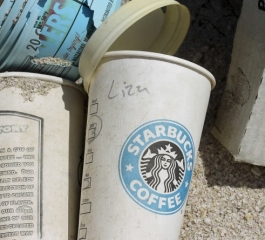Want to know more about the paper recycling process? And yet, understand why not all paper can be recycled? Then this is the perfect article for you! Check it out.
Is paper recyclable?
Yes, paper’s natural properties and production process make it recyclable, however, papers such as cellophane, tracing paper, waxed papers and many others are not recyclable.
There are several reasons why paper can be recycled:
Natural composition: Paper consists mainly of cellulose fibers, extracted from trees. We can recycle these fibers and use them to make recycled paper.
Production process: Producing recycled paper requires less energy and water than manufacturing virgin paper, resulting in a lower environmental impact during the process.
Therefore, paper recycling is a more sustainable and environmentally friendly alternative.
Waste Reduction: Paper recycling reduces the amount of waste sent to landfills, helping to reduce pollution and the space required for solid waste disposal.
Conservation of natural resources: By recycling paper, we reduce the need to cut down more trees to produce virgin paper, preserving natural resources and forest biodiversity.
Circular economy: Paper recycling is part of the circular economy concept, where materials reused in continuous production cycles avoid waste and promote sustainability.
In summary, the cellulose fibers in paper are reusable for the production of recycled paper, which reduces the need for natural resources, saves energy and water, and contributes to the preservation of the environment.
Paper recycling is an important practice to promote sustainability and reduce environmental impact.
Which papers are not recyclable?
Some specific characteristics of the materials that compose them make some types of paper non-recyclable.
Paper such as toilet paper, tissue paper, cellophane, tracing paper, photographs and waxed or laminated paper cannot be recycled.
This is because, generally speaking, for paper to be recyclable, it must be clean and free of contaminants that could harm the recycling process.
Coatings, chemical treatments, or contamination from other materials often make papers unsuitable for recycling.
How to recycle paper?
Recycling paper is a relatively simple process, and following a few basic guidelines can help ensure that paper is recycled correctly. Here are the steps to recycle paper:
Collection: Separate the paper you want to recycle from other waste such as plastic, metal or glass. It is important to ensure that the paper is clean, free of excessive dirt or contaminants that could hinder the recycling process.
Separation: Sort paper according to type. Recyclable paper can include writing paper, printer paper, magazine paper, newspaper, cardboard boxes, and more.
Remember to remove any non-recyclable parts, such as staples or tape, before recycling the paper.
Crunch or flatten: To save space and make it easier to transport, crumple or flatten the paper before placing it in the recycling bin.
Recycling Container: Check to see if your community offers separate collection or provides recycling containers for paper.
[articles-photos]
If there is a separate collection program in your area, place the recyclable paper in the paper/card bin.
Otherwise, look for specific recycling collection points or recycling companies that accept paper.
Local Recycling: Look for information about local recycling facilities to make sure they are prepared to process recycled paper.
This may vary depending on the region you live in.
Avoid contamination: Avoid mixing recyclable paper with other non-recyclable materials. Contaminants can impair the quality of recycled paper and compromise the process.
Final considerations
In summary, Proper paper recycling is essential for environmental sustainability, conserving natural resources and reducing the negative impact of virgin paper production.
However, not all types of paper are recyclable, such as cellophane, tracing paper, waxed paper, among others.
Paper recycling is part of the circular economy, contributing to the preservation of the environment and promoting a more balanced and sustainable future.


